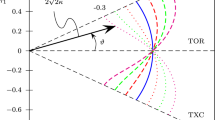Quick and correct prediction of the internal stress and deformation of stainless steel-clad plates on heat treatment is a problem of specific interest. A thermomechanical coupling model based on the engineering elastic-plastic theory is detailed. The discretization method and difference equations used simultaneously provide effective numerical calculations for the model. The generalized finite element model verifies relevant simplification conditions and efficiency of the numerical calculation logic. Heat treatment experiments of clad plates are also designed and presented, and the ability of the model to predict the stress and deformation behavior of the clad plate in the actual heat treatment process is evaluated. The calculation logic of the model is reasonable, and the prediction error of deformation and internal stress of the plate is ~15%. The model exhibits an extremely high computational efficiency and can meet the requirements of on-line analysis for heat treatment processes.













Similar content being viewed by others
References
Y. Jing, Y. Qin, X. Zang, and Y. Li, “The bonding properties and interfacial morphologies of clad plate prepared by multiple passes hot rolling in a protective atmosphere,” J. Mater. Process. Tech., 214, No. 8, 1686–1695 (2014).
L. Li, F. X. Yin, and K. Nagai, “Progress of laminated materials and clad steels production,” Mater. Sci. Forum, 675–677, 439–447 (2011).
L. Li, K. Nagai, F. Yin, “Progress in cold roll bonding of metals,” Sci. Technol. Adv. Mater., 9, No. 2, 023001 (2008), doi: https://doi.org/10.1088/1468-6996/9/2/023001.
M. Yang, X. Zuo, M. Zhao, and J. Wang, “Research Progress of manufacturing technology for stainless steel clad plate,” Hot Work. Technol., No. 20, 93–96 (2012).
H. Liu, X. Zhang, and L. Li, “Effects of heat treatment on microstructure and properties of hot rolled stainless steel clad plate,” Trans. Mater. Heat Treat., 38, No. 6, 67–70 (2013).
G. Xie, Z. Luo, G. Wang, et al., “Interface characteristic and properties of stainless steel/HSLA steel clad plate by vacuum rolling cladding,” Mater. Trans., 52, No. 8, 1709–1712 (2011).
I. Hordych, D. Rodman, F. Nürnberger, et al., “Effect of pre-rolling heat treatments on the bond strength of cladded galvanized steels in a cold roll bonding process,” Steel Res. Int., 87, No. 12, 1619–1626 (2016).
N. V. Rao, D. S. Sarma, S. Nagarjuna, and G. M. Reddy, “Influence of hot rolling and heat treatment on structure and properties of HSLA steel explosively clad with austenitic stainless steel,” Mater. Sci. Technol., 25, No. 11, 1387–1396 (2009).
H. Jiang, X. Yan, J. Liu, and X. Duan, “Effect of heat treatment on microstructure and mechanical property of Ti–steel explosive-rolling clad plate,” T. Nonferr. Metal. Soc., 24, No. 3, 697–704 (2014).
M. Yazdani, M. R. Toroghinejad, and S. M. Hashemi, “Effects of heat treatment on interface microstructure and mechanical properties of explosively welded Ck60/St37 plates,” J. Mater. Eng. Perform., 25, No. 12, 5330–5342 (2016).
Y. Trykov, L. Gurevich, D. Pronichev, and M. Trunov, “Influence of strain-hardened zones and intermetallic layers of explosion welded and heat treated Al/Cu laminated metal composites on the evolution of thermal conductivity coefficient,” Mater. Sci., 20, No. 3, 267–270 (2014).
H. J. Li, L. G. Li, Y. L. Li, and G. D. Wang, “Online monitor and control of cooling temperature on run-out table of hot strip mill,” Steel Res. Int., 86, No. 11, 1225–1233 (2015).
Y. Lee, S. Choi, and P. D. Hodgson, “Integrated model for thermo-mechanical controlled process in rod (or bar) rolling,” J. Mater. Process. Tech., 125–126, 678–688 (2002).
A. K. Singh and D. Mazumdar, “Comparison of several numerical prediction methods for thermal fields during phase transformation of plain carbon steels,” ISIJ Int., 31, No. 12, 1441–1444 (1991).
A. Mukhopadhyay and S. Sikdar, “Implementation of an on-line run-out table model in a hot strip mill,” J. Mater. Process. Tech., 169, No. 2, 164–172 (2005).
A. Saboonchi and S. Hassanpour, “Simulation-based prediction of hot-rolled coil forced cooling,” Appl. Therm. Eng., 28, No. 13, 1630–1637 (2008).
N. Mansouri, M. Mirhosseini, and A. Saboonchi, “Thermal modeling of strip across the transfer table in the hot rolling process,” Appl. Therm. Eng., 38, 91–104 (2012).
X. Chen, G. Wang, Y. Tian, et al., “An on-line finite element temperature field model for plate ultra fast cooling process,” J. Iron Steel Res. Int., 21, No. 5, 481–487 (2014).
G. Sun, H. N. Han, J. K. Lee, et al., “A finite element model for the prediction of thermal and metallurgical behavior of strip on run-out-table in hot rolling,” ISIJ Int., 42, No. 4, 392–400 (2002).
A. Milenin, R. Kuziak, M. Lech-Grega, et al., “Numerical modeling and experimental identification of residual stresses in hot-rolled strips,” Arch. Civ. Mech. Eng., 16, No. 1, 125–134 (2016).
H. H. Cho, Y. G. Cho, D. W. Kim, et al., “Finite element investigation for edge wave prediction in hot rolled steel during run out table cooling,” ISIJ Int., 54, No. 7, 1646–1652 (2014).
X. Wang, F. Li, Q. Yang, and A. He, “FEM analysis for residual stress prediction in hot rolled steel strip during the run-out table cooling,” Appl. Math. Model., 37, No. 1, 586–609 (2013).
Y. Lu and L. Cheng, Theory and Analysis of Heat Transfer, Science Press (1997).
Y. Y. Zhang, Z. W. Zhao, Q. Hu, et al., “Establishing and verifying mathematical models of inverse heat conduction problem during aerosol cooling process of the continuous casting,” Comput. Simul., 32, No. 1, 270–273 (2015).
A. M. Nawwar, K. McLachlan, and J. Shewchuk, “A modified hole-drilling technique for determining residual stresses in thin plates,” Exp. Mech., 16, No. 6, 226–232 (1976).
Author information
Authors and Affiliations
Corresponding author
Additional information
Translated from Problemy Prochnosti, No. 1, pp. 48 – 64, January – February, 2019.
Rights and permissions
About this article
Cite this article
Guan, B., Zang, Y., Yang, F. et al. Thermomechanical Coupling Model for a Stainless Steel-Clad Plate on Heat Treatment. Strength Mater 51, 40–55 (2019). https://doi.org/10.1007/s11223-019-00048-x
Received:
Published:
Issue Date:
DOI: https://doi.org/10.1007/s11223-019-00048-x




